The Meloncillo (Herpestes ichneumon), also known as the Egyptian mongoose, is a remarkable predator known especially for its ability to hunt snakes. Beyond this famous skill, the Meloncillo exhibits many fascinating traits such as swimming proficiency and the ability to break open eggs for food. This article provides a comprehensive overview of the Meloncillo’s physical characteristics, habitat, diet, reproduction, and behavior.
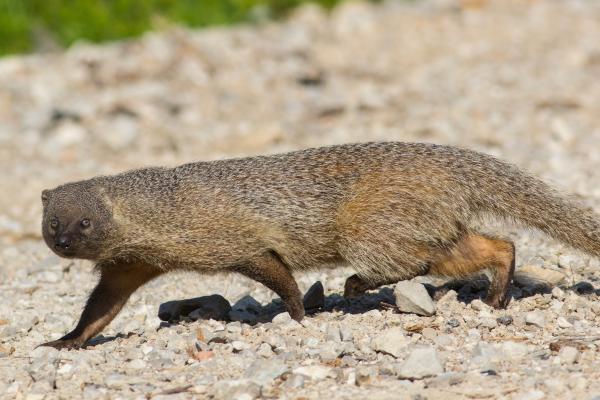
The Meloncillo is a long-bodied mammal that can be mistaken for a reptile from a distance. Key features include:
Long tail ending in a bushy tuft of fur.
Fur coloration varies, typically gray with dark spots but sometimes reddish with yellowish speckles. It can raise its fur and arch its back to appear twice its size when threatened.
Elongated head with rounded ears, and hairless skin rings around the eyes.
Medium size, measuring 48 to 60 cm in body length, with a tail length of 33 to 54 cm, weighing 2 to 4 kilograms.
Short legs with five long claws on each foot, adapted for digging.
Large anal pouch with two glandular openings, used for communication and territorial marking.
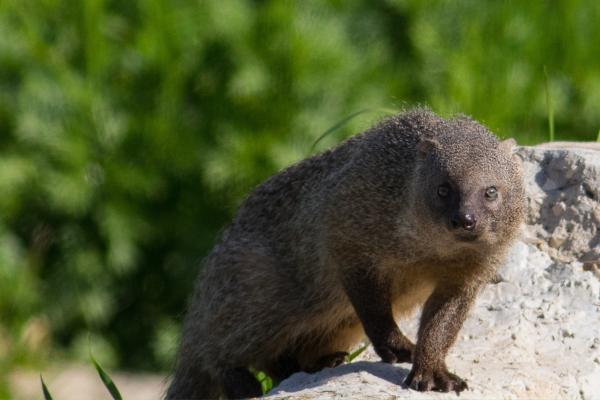
Native to Africa, the Meloncillo was introduced to Spain during the Middle Ages by Muslims and later to Italy and Madagascar. Another hypothesis suggests European mongooses may have crossed the Strait of Gibraltar during the Late Pleistocene, leading to speciation through geographic isolation.
In Spain, the Meloncillo was widespread throughout the Iberian Peninsula in the 19th century but became restricted to the southwestern area by the 20th century. Currently, populations are found in central and northwest Iberia, eastern Málaga province, and specific zones in western Granada.
Beyond Spain, the Meloncillo inhabits:
Portugal
Israel
Most of Africa, excluding Zaire, West Africa, and Southeast Africa
It favors areas near water and dense vegetation such as riverbanks, swamps, cultivated fields, and irrigation canals. It shelters in:
Hollow logs
Ground burrows
Rock crevices used as nighttime refuges
The Meloncillo is a carnivore with molars adapted for tearing flesh. Its diet includes:
Fish
Birds
Small mammals
Reptiles and amphibians
Invertebrates
Eggs of birds and even crocodiles
Its scientific name Herpestes ichneumon reflects its reputation as a snake predator. To open eggs, it grasps them with its hind legs and smashes them against rocks.
While hunting insects, it sniffs the ground and digs to extract prey.
Against snakes, the Meloncillo raises its fur to confuse the serpent and attacks from behind the head. It exhibits fast and agile movements to catch snakes effectively.
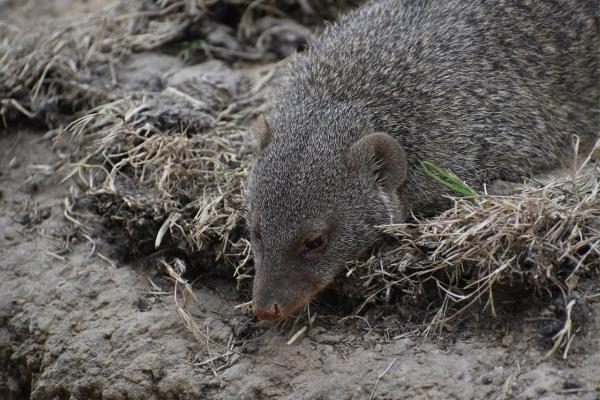
There is no clear sexual dimorphism between males and females. Mating courtship involves the male bringing his mouth close to the female’s neck for about five minutes, accompanied by vocalizations repeated by the female as acceptance. The female’s playful running signals her readiness to mate.
The female’s reproductive cycle is marked by reddening and swelling of the vulva, with the ability to enter heat rapidly—even as soon as ten days postpartum.
Meloncillos have internal fertilization and an approximately 11-week gestation. During birth, females stand on their hind legs with slightly bent knees, delivering 2 to 4 blind, hairless pups. Eyes open at around 8 weeks.
Wild Meloncillos live about 12 years; in captivity, up to 20 years.
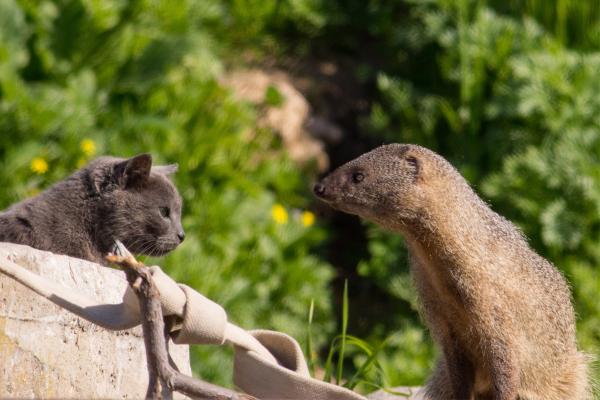
Meloncillo behavior varies greatly. Some individuals are solitary, while others form hunting groups of 2 to 7 animals, favoring smaller groups to reduce food competition. They are excellent swimmers and enjoy sunbathing.
They are diurnal, agile, and playful, though some can be quite wild. Historically, they were tamed as pets earlier than cats.
A unique feature of the Meloncillo is its powerful anal gland scent. The odor is so strong that individuals sometimes cover their noses with their tails. This scent plays a crucial role in navigation; leaders move ahead while followers track the scent trail. Mothers also guide their young using this scent. The anal sac additionally signals female reproductive status and distinguishes individuals from different groups.
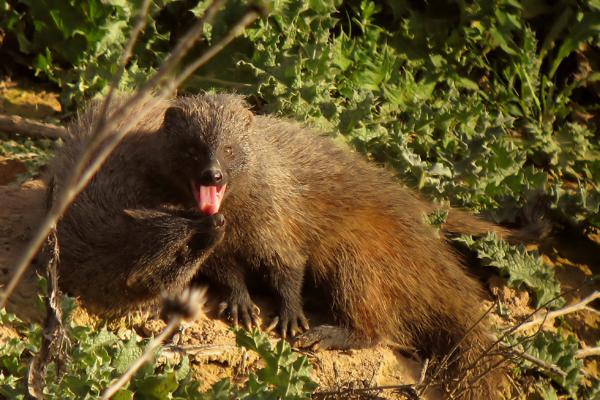
Bibliography
González-Broco, C., Vázquez, J., Larios-López, J. E., Fernández, A., Cortés, S., Blanca, I., & Virgós, E. (2016). Distribution of the mongoose (Herpestes ichneumon) in the province of Granada. Galemys, 28, 41–51.
Bies, L. (2002). "Herpestes ichneumon" Animal Diversity Web. Available at: https://animaldiversity.org/accounts/Herpestes_ichneumon/
animal tags: Meloncillo
We created this article in conjunction with AI technology, then made sure it was fact-checked and edited by a Animals Top editor.